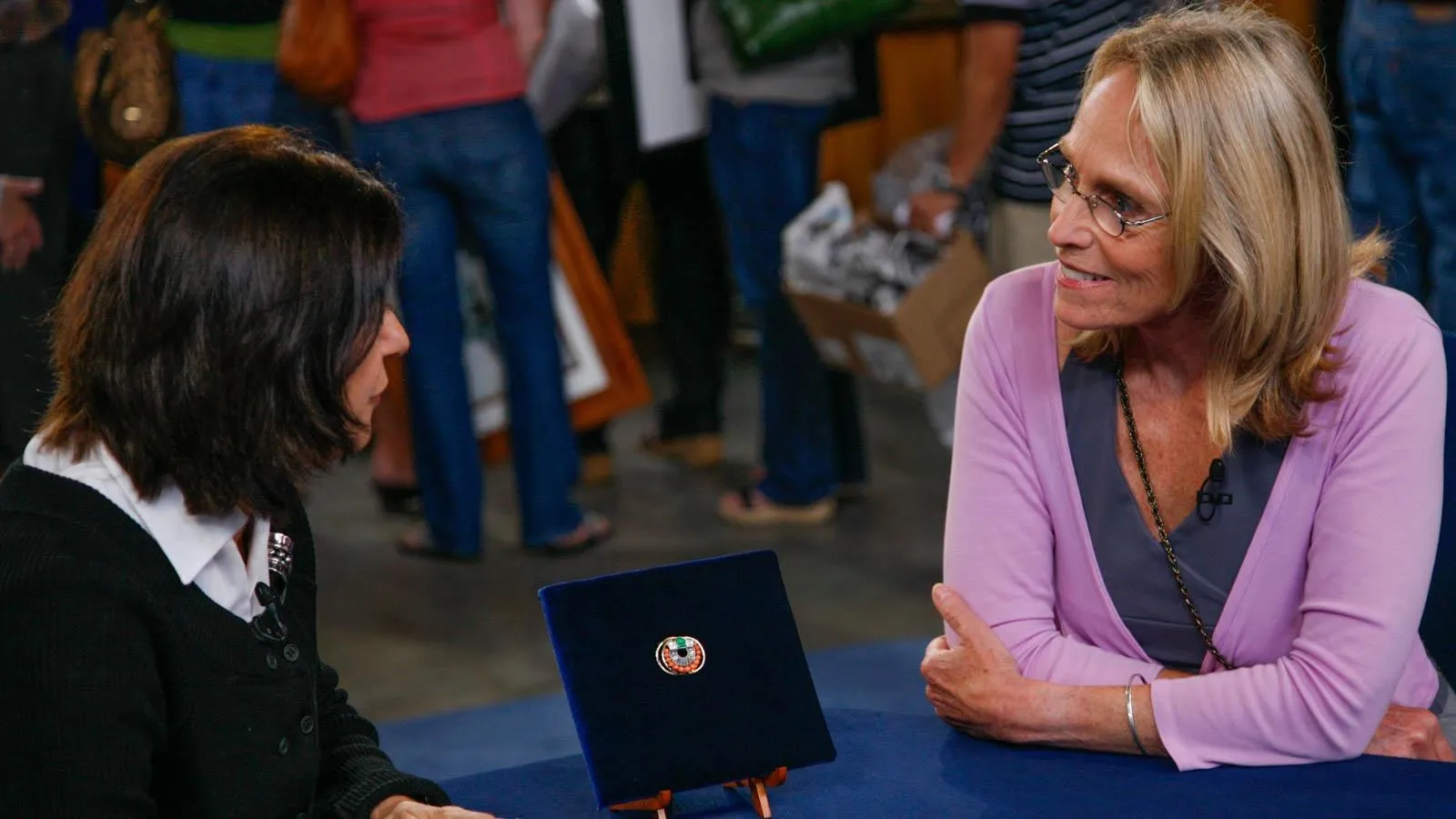GUEST: They're inherited. I don't know if they're from my grandmother. Some of ‘em are from my grandmother, some of ‘em are from my mother, some of ‘em my mother bought in, uh, this, they used to call ‘em secondhand stores.
APPRAISER: Right.
GUEST: And she started collecting, I guess, in the '40s, and I have a lot of her things, and I picked these out because I was interested in them.
APPRAISER: You've got several of these brown transferware plates.
GUEST: Yes.
APPRAISER: And they're really well-marked on the, on the back. It's got the manufacturer, which is Alfred Meakin, which is a company in Staffordshire, England. And it, it's the Fair Winds pattern. And we might say, "Well, how old are these plates?" But there's a really interesting clue in helping date these plates. Besides having information about the type of pattern…
GUEST: Mm-hmmm.
APPRAISER: but there's some information here, and it says "dishwasher- and detergent-safe." So these are actually fairly recent. These are probably from about the 1970s.
GUEST: Okay.
APPRAISER: And they're not really very valuable, but they're fun, decorative plates...
GUEST: Mm-hmm.
APPRAISER: ....that a lot of people might have at home. Now, the next plate we're going to look at is this wonderful hand-painted and hand-enameled plate here, which is very typical of the English Aesthetic movement, which was inspired by Japanese design.
GUEST: Okay.
APPRAISER: And also Japanese cloisonné. The bottom here was painted to look like cloisonné, which is actually enamel on metal, but they made a similar design on English bone china.
GUEST: Mm-hmm.
APPRAISER: Now, on the back it looks like it's completely unmarked. But if you look at it really closely-- you have to hold it in the light just right, it's hard to see...
GUEST: Mm-hmm.
APPRAISER: ...there is impressed "Mintons," and then there are several other little symbols there, including a little symbol which I looked up on a chart. An-it tells us this plate was made in 1888. And that's one thing that we like about Minton china. There's usually a date mark, so we know exactly when it was made.
GUEST: Mm-hmm, mm-hmmm.
APPRAISER: Then the final plates that you have-- you have a pair of plates here-- and they're very finely hand-painted with scenes. If we take a look at the mark on this one... And they have similar marks.
GUEST: Mm-hmm.
APPRAISER: First of all, they have the mark of the manufacturer and then a title hand-painted in black. Now, the manufacturer is the Royal Porcelain Manufactory in Berlin, often known as KPM Porcelain. And this particular mark was used between 1849 and 1870. And they both have the title of the location. Now, this one is Heisterbach. Heisterbach is a famous ruined abbey in Germany. And the other one is labeled Braubach, which is on the Rhine River.
GUEST: Mm-hmm.
APPRAISER: And this is the Marksburg Castle at the top. The little plates, from the 1970s, are worth about five dollars apiece. Now, the English plate, the Minton plate, is probably worth between $400 and $600 in a retail-type situation.
GUEST: Mm-hmm, mm-hmm.
APPRAISER: And then the KPM plates are the best ones.
GUEST: Mm-hmm.
APPRAISER: They're worth between $2,000 and $3,000 for the pair in a retail situation.
GUEST: All right.
APPRAISER: They're, they're terrific plates.











